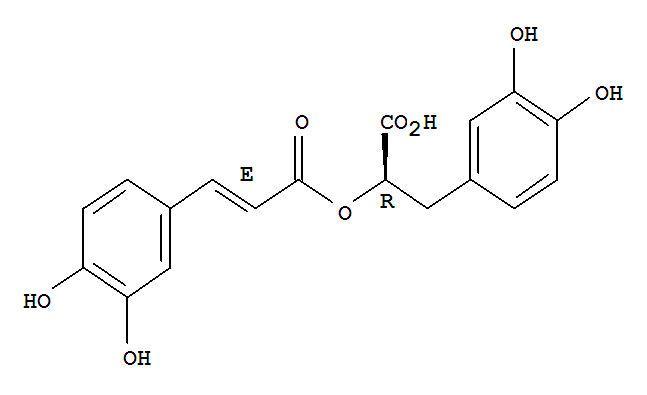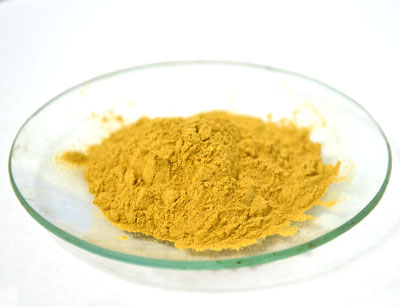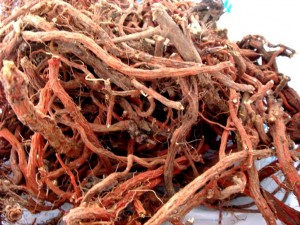INTRODUCTION
The consumer’s recent interest in “natural” products requires natural antimicrobial and antifungal substances to replace conventional biocides such as parabens, quaternary ammoniun salts (benzethonium chloride), triclosan, benzoates, etc.
There are products in the market labelled as “100% natural” with a broad spectra of bactericide properties. Most of these products contain compounds with structures very close to parabens or quaternary ammoniun salt. The manufacturers of these products claim that these compounds are produced in the manufacturing process. 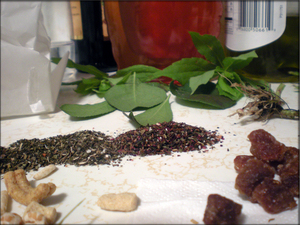 However the biological effects of any compound is related to their chemical structure, and not to their origin. Moreover the consumer is not helped with the term “bio”, thinking that the product in question is natural, due to the fact that some countries (Spain) even allow this term for synthetic products.
However the biological effects of any compound is related to their chemical structure, and not to their origin. Moreover the consumer is not helped with the term “bio”, thinking that the product in question is natural, due to the fact that some countries (Spain) even allow this term for synthetic products.
Nutrafur AntimicRo is a natural extract from Labiatae plant without any compounds similar to synthetic biocides.
The species, notably the Labiatae family, are well known for their antioxidative properties and have been reported to have strong antimicrobial capabilities (Löliger, 1989; Schuler, 1990; Chen et al., 1992; Aruoma et al., 1996). The most of the Labiatae plants contain considerable amounts of Rosmarinic acid, which, in addition to well known free radical scavenger properties, displays antibacterial and antifungal properties.
Rosmarinic acid is found in substantial quantities in several species in the Labiatae family with medicinal uses. Salvia lavandulifolia is used as a choleretic, antiseptic, astringent and hypoglycemic drug in southern Europe and contains high quantities of Rosmarinic acid (Caniguera et al., 1989). Rosmarinic acid-containing Ocimum santctum (holy basil) is widely used to reduce fevers and against gastrointestinal disease in India. In Mexico, high Rosmarinic acid -containing Hyptis verticillata is widely used by Mixtec Indians against gastrointestinal disorders and skin infections (Kuhnt et al., 1995). 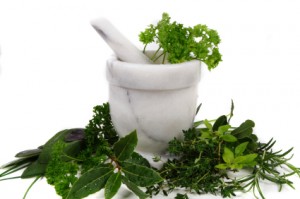 In Indonesia and several other parts of the southeast Asia, Rosmarinic acid-containing Orthosiphon aristatus is known for its diuretic properties and is also used against bacterial infections and inflammations of the urinary system (Sumaryono et al., 1991). Salvia cavaleriei, a high Rosmarinic acid-containing specie is used for treatment of dysentery, boils and injuries (Zhang and Li, 1994).
In Indonesia and several other parts of the southeast Asia, Rosmarinic acid-containing Orthosiphon aristatus is known for its diuretic properties and is also used against bacterial infections and inflammations of the urinary system (Sumaryono et al., 1991). Salvia cavaleriei, a high Rosmarinic acid-containing specie is used for treatment of dysentery, boils and injuries (Zhang and Li, 1994).
ACTIVE INGREDIENTS
Rosmarinic acid is the main compound found in our Nutrafur AntimicRo among the several flavanones and flavones with synergistic effects as occuring in other natural extract such as perilla. However, the content in both rosmarinic acid and flavones is several times higher (see specifications) in our Nutrafur AntimicRo than that one found in perilla extract.
Rosmarinic acid is an important caffeoyl ester (phenolic depside) with proven medicinal properties and well characterized physiological functions. The most recent studies on Rosmarinic acid activity comfirm that caffeoyl esters as rosmarinic acid shows the highest specific antioxidant activity (SAA), delayed vitamin E depletion and decrease pro-inflammatory lysophosphstidylcholine production (Cartron et al., 2001). Rosmarinic acid prevent the oxidation of LDL and its constituents (vitamin E, phosphstidylcholine), which is compatible with anti-inflammatory and anti-atheroesclerotic role in pathophysiological conditions (Cartron et al., 2001).
Antimicrobial and antifungal properties of rosmarinic acid against 40 different strains belonging to 10 genera of bacteria, and 25 different strains belonging to 25 species of fungi have been published recently (Andary and Audre, 1998). The bacterial strains tested were: Salmonella, Serratia, Enterobacter, Proteus, Providentia, Echerichia coli, Streptococcus, Klebsiella and staphylococcus. In all bacterial, 100% inhibition was observed at dosages of 0.5 mg/ml. More detailed study on 29 strains of Staphylococcus aureus showed 70% inhibition at concentration of 0.06 mg/ml and 80% at 0.12 mg/ml (Andary and Audre, 1998).
Antifungal activity was tested against starins of: Adelomycetes, Mucorales, Rhizopus, Endomycetes, Plectomycetes and Pyrenomycetes (Andary and Audre, 1998).
SPECIFICATIONS
Appearance: Yellowish-brown powder with characteristic bitter taste.
Solubility: Soluble 20% (p/v) in water, 20% in propylene glycol, 0.2% in vegetable oil (with opalescence).
Moisture: Less than 8% (Karl Fisher)
Heavy metals: Less than 20 p.p.m.
Rosmarinic acid*: More than 15% (HPLC, as db)
Microbiology assay: Total plate count: Less than 1.000/g
Yeast and Mould: Less than 100/g
E. Coli and Salmonella. Negative/g.
Shelflife: 2 years, min in a well closed drum.
Lower qualities (standardized with maltodextrins) are also available upon request.
DISTRIBUTION OF PHENOLIC COMPOUNDS BY HPLC.
| % abs. Dry basis | ||
| Total Phenolics | 16,0-25,0% | |
| Rosmarinic acid | 15,0-20,0% | |
| Total Flavones | 1,0-5,0% |
Legal status: Rosmarinic acid is a 100% natural product approved by:
- FDA Revision of 21 Code of Federal Regulation 21 CFR, Part 182-20.
- FEMA GRAS 3001 and 2992.
- CEE 88/388/ECC and 88/344/ECC list 1 nº 406.
APPLICATIONS
Due to the high content of Rosmarinic acid and its excellent water solubility, Nutrafur AntimicRO is a suitable antimicrobial agent for food and cosmetic products with aqueous base.
The biocide properties of rosmarinic acid are compared against other compounds in Table 1 (Andary and Audre, 1998):
| Compound | Strains inhibited (%) |
Strains inhibited by MIC <10mg/ml (%) |
| Rosmarinic acid | 100 | 96 |
| Oraposide | 92 | 64 |
| Caffeic acid | 83 | 52 |
| Chlorogenic acid | 80 | 40 |
| Verbascoside | 72 | 44 |
Recent studies on inhibition of Listeria monocytogenes in meat products have shown that herb extracts containing high concentration of rosmarinic acid are inhibitory or lethal as pH function of the media. At pH 7.0 250 ppm of rosmarinic acid are inhibitory but not lethal to Listeria, however at pH 5.0 200 ppm of rosmarinic acid are lethal. The susceptibility of Listeria to plant phenolics at low pH may be affected through the disruption of H+-ATPase.
When pH is reduced in meat products with lactic acid at pH 6.0 there was total lethality at 100 ppm of rosmarinic acid. The use of Nutrafur AntimicRo with high content of rosmarinic acid can be a good weapon to control Listeria and other meat micro organisms in food products.
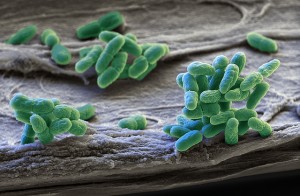 As occurs in other natural extracts such as perilla seed extract the combination between flavones and rosmarinic acid exhibit a good bactericide properties against oral streptococci (S. mutans, sanguis, oralis, etc) and Porphyromonas gingivalis. Nutrafur AntimicRO inhibits the growth of periodontopathic microorganisms and reduces inflammation of gingiva due to their well known antinflammatory properties (Peake et al., 1991; Engelberger et al., 1988). These properties makes to Nutrafur AntimicRO suitable for toothpastes or mouthwash treating gingivitis and periodontal diseases.
As occurs in other natural extracts such as perilla seed extract the combination between flavones and rosmarinic acid exhibit a good bactericide properties against oral streptococci (S. mutans, sanguis, oralis, etc) and Porphyromonas gingivalis. Nutrafur AntimicRO inhibits the growth of periodontopathic microorganisms and reduces inflammation of gingiva due to their well known antinflammatory properties (Peake et al., 1991; Engelberger et al., 1988). These properties makes to Nutrafur AntimicRO suitable for toothpastes or mouthwash treating gingivitis and periodontal diseases.
Other important application of Nutrafur AntimicRO is in animal feed as substitutive of synthetic antibiotics. Due to wide spectrum of biocide properties against bacterial and fungal, Nutrafur AntimicRO can be a good anti-microbial agent in the prophylaxis of Salmonellosis in poultry, Streptoccocosis in piglets, lambs and domestic pet food at level of 200-1000 ppm.
The main applications and dosage for Nutrafur AntimicRO are summarized in Table 3:
| Fields | Applications | Dosage Levels | Incorporation Technique |
| Food | Meat Products,Poultry | 0.05-0.2% | Add directly to mixer |
| Food | Soup | 0.05-0.2% | Add directly to aqueous phase |
| Food | Vegetable juice, soft drinks | 0.05-0.2% | Add directly to beverage |
| Food | Pet food, other animal feed | 0.02-0.1% | Add directly to mixer |
| Cosmetic | Shampoos, gel etc | 0.1-0.2% | Add before mixing or dissolved in propileneglycol |
| Cosmetic | Toothpaste, mouthwash etc | 0.1-0.2% | Add directly to aqueous phase |
BIBLIOGRAPHY
Andary, C. and Andre, P. (1998). Derivative of caffeic acid, oraposide, and cosmetic or pharmaceutical compositions, in particular dermatological compositions, containing it. US Patent 5719129.
Aruoma, O.I.; Spencer, J.P.; Rossi, R.; Aeschbach, R.; Khan, A.; Mahmood, N.; Muñoz, A.; Murcia, A.; Butler, J. and Halliwell, B. (1996). An evaluation of the antioxidant and antiviral action of extracts of rosemary and Provencal herbs. Food Chem. Toxicol., 34, 449-456.
Caniguera, S.; Iglesias, J.; Hamburger, M.; and Hostettmann, K. (1989). Phnolic constituents of Salvia lavandulifolia ssp. Planta Medica, 55, 92-97.
Cartron, E.; Carbonneau, M.A.; Fouret, G.; Descomps, B. And Leger, C.L: (2001). Specific antioxidant activity of caffeoyl derivatives and other natural phenolics compounds: LDL protection against oxidation and decrease in the proinflammatory lysophosphatidylcholine production. J. Nat. Prod., 64, 480-486.
Chen, Q.; Shi, H. and Ho, C.T. (1992). Effects of rosemary extracts and major constituents on lipid oxidation and soybean lipoxygenase activity. J. Am. Oil Chem. Soc., 69, 999-1002.
Engleberger, W.; Hadding, U.; Etschenberg, E.; Graf, E.; Leyck, S.; Winkelmann, J. And Parnham, M.J. (1988). Rosmarinic acid: a new inhibitor of complement C3-convertase with anti-inflammatory activity. Int. J. Immunopharmacol, 10, 729-737.
Kuhnt, M.; Probstle, A.; Rimpler, H.; Bauer, R. and Heinrich, M. (1995). Biological and pharmacological activities and further constituents of Hyptys verticillata. Planta Medica, 61, 227-232.
Löliger, J. (1989). Natural antioxidants. In Rancidity in Food; Allen, J.Hamiltin, R., Eds.; Elsevier Science: New York.
Peake, P.W.; Pussell, B.A.; Martyn, P.; Timmermans, V. and Charlesworth, J.A. (1991). The inhibitory effect of rosmarinic acid on complement involves the C5 convertase. Int. J. Immunopharmacol, 13, 853-857.
Schuler, P. (1990). Natural antioxidants exploited commercially. In Food Antioxidants; B.J.F., Ed.; Elsevier Applied Science: London; Chapter, 4.
Sumaryono, W.; Proksch, P.; Hartmann, T.; Nimtz, M. and Heinrich, M. (1991). Induction of rosmarinic acid accumulation in cell suspension cultures of of Orthosiphon aristatus after treatment with yeast extract. Phytochemistry, 30, 3267-3271.
Zhang, H.J. and Li, L.N. (1994). Salvianolic acid I: A new depside from Salvia cavaleriei. Planta Medica, 60, 70-72.
Disclaimer
These suggestions and data are based on information we believe to be reliable. They are offered in good faith but without guarantee, since conditions and methods of use of our products are beyond our control. Statements contained herein should not be considered as a warranty of any kind, expressed or implied, and no liability is accepted for the infringement of any patents.
This information about NutrafurAntimicRO acid is exclusively given for informational and educational purposes only and not for medical advice. A medical or health professional should be consulted for any questions regarding health.

